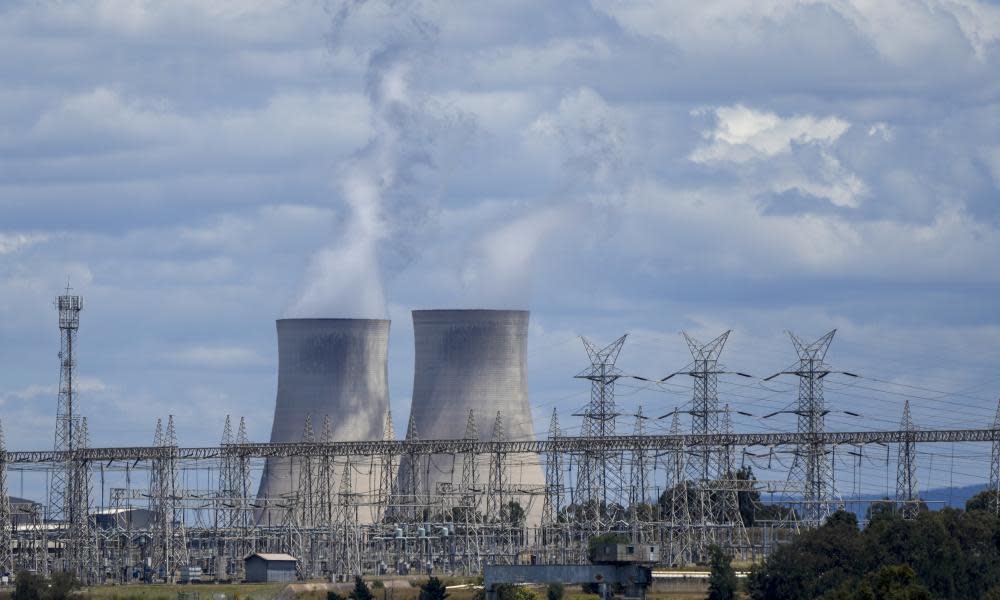Higher cost of fossil fuels drives wholesale power prices up despite falling market share

Electricity demand hit a record low in several states during a milder-than-usual end to 2021, but average wholesale prices were up from a year earlier due to the higher cost of fossil fuels even as their share of the market dived.
The December quarterly energy dynamics report by the Australian Energy Market Operator (Aemo), released on Friday, showed renewable energy set generation highs in the national electricity market (NEM).
Clean energy accounted for 34.9% of generation across the quarter, beating the 31.6% record set in the previous three months. At one point on 15 November renewables supplied 61.8%, surpassing the previous record of 61.4% set in the September quarter.
NEM emissions fell to the lowest quarterly total on record at 28m tonnes carbon dioxide equivalent, 8% less than the previous quarterly low set a year earlier, Aemo said.
Related: Growth in rooftop solar slows due to lockdowns and supply chain issues
Cooler, wetter climatic influences, driven in part by a La Niña event in the Pacific, curbed demand for air-conditioning. With more consumers supplying their own power from rooftop panels, average demand from the grid dropped to 19,876 megawatts – the least in a December quarter since 2005, Aemo said.
More expensive fossil fuels played a central role in pushing up wholesale power prices in mainland states, particularly in Queensland and NSW. Power averaged $57 a megawatt hour, down 13% on the September quarter, but nearly a third higher than in the December quarter of 2020.
“Increases in underlying traded prices for black coal and gas were likely to have been influences on offer price levels for some of these generators,” the report said.
“The gap between prices in the northern NEM regions of Queensland and NSW and the southern regions persisted through the quarter, with prices in [the two states] averaging $45/MWh higher than those in Victoria and South Australia, the second largest differential after the June quarter of 2021.”
Market prices were negative or zero for longer periods due to the increased use of rooftop solar and large-scale solar plants. In Victoria, spot price averages in the quarter were negative between 0925 hrs and 1420 hrs, while the overall average between 0800 hrs and 1630 hrs was just one cent per MWh.
However, the global scramble for energy supplies late last year fed into local costs. Black coal-fired power plants and their gas equivalents were more often outbid by other sources as a result, even though repairs on ageing units actually increased their availability compared with a year earlier.
During the quarter, the coal plants in Queensland and NSW averaged just over 10,000 MW of supply, the lowest during the October-December period since the market’s creation in 1998. Victoriaalso saw average use rates of its brown coal-fired plants decline.
While the Morrison government had touted a gas-led recovery from Covid, the share of the fuel in the market was the lowest for the fourth quarter since 2003. In renewables-rich South Australia, the share was the least since the market’s start.
Demand for grid power sank to a record low on Sunday 17 October, of 12,936MW at 1pm, almost 9% lower than the previous nadir set during the September quarter.
That date and time was also NSW’s lowest for operational demand. Consumers there tapped the grid for only 4425MW, shaving about 5% off the previous record low set in 1999.
Victoria’s new minimum demand of 2333 MW was set on 28 November – also at 1pm on a Sunday. That tally lopped about 6.6% off the previous low notched during the fourth quarter of 2020.
Related: Thousands without power in Victoria as dangerous thunderstorms lash state
Averaged over the quarter, NSW, Victoria and SA each posted record December quarter lows for grid demand. The spread of rooftop panels to total about 3200MW of capacity meant many consumer supplied their own needs even during a period marked by increased cloudiness and rain influenced by the La Nina.
Even the maximum demand days were cut, such as in NSW where the 11,176MW top was the lowest in a December quarter since 2001.
The trends in place at the end of 2021 look set to extend into this year. Futures prices for 2022 increased across all states, rising from an average of $57/MWh at the end of September to end the year at $73/MWh.
“Participants’ outlooks [were] influenced by wholesale spot price trends, possible impact from long-term generation unit outages and closures, and potentially higher fuel cost expectations in 2022,” Aemo said.

 Yahoo News
Yahoo News 
